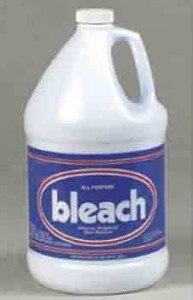
More evidence that low-calorie sweeteners are bad for your health
Studies show that artificial sweeteners can raise the risk of hypertension, metabolic syndrome, type 2 diabetes and heart disease, including stroke.

Natural Health News — Passive exposure to bleach in the home is linked to higher rates of childhood respiratory illness and other infections, according to new research
Because of the widespread use of bleach in the home, the researchers, writing in the journal Occupational & Environmental Medicine say the results are of particulate concern and call for further more detailed studies in this area.
The international study looked at the potential impact of exposure to bleach in the home among more than 9000 children between the ages of 6 and 12 attending schools in Utrecht, The Netherlands, in Eastern and Central Finland and in Barcelona, Spain.
Bleach use varies internationally
Their parents were asked to complete a questionnaire on the number and frequency of health problems including flu, tonsillitis, sinusitis, bronchitis, ear infection, and pneumonia which their children had had in the preceding 12 months. They were also asked if they used bleach to clean their homes at least once a week.
Use of bleach was common in Spain (72% of respondents) and rare (7%) in Finland. All Spanish schools were cleaned with bleach, while Finnish schools were not.
After taking into account some influential factors, such as passive smoking at home, parental education, the presence of household mould, and use of bleach to clean school premises, the findings indicated that the number and frequency of infections were higher among children whose parents regularly used bleach to clean the home in all three countries.
Higher risk when more bleach is used
For illnesses such as flu, tonsillitis, and any type of recurrent infection the results were particularity significant.
The risk of one episode of flu in the previous year was 20% higher, and recurrent tonsillitis 35% higher, among children whose parents used bleach to clean the home.
Similarly, the risk of any recurrent infection was 18% higher among children whose parents regularly used cleaning bleach.
By way of an explanation the researchers suggest that the irritant properties of volatile or airborne compounds generated during the cleaning process may damage the lining of lung cells, sparking inflammation and making it easier for infections to take hold. Bleach may also potentially suppress the immune system, they said.
This is an observational study, and the authors were keen to stress that there were some things they did not research that may also have been influential
For example, they didn’t have any information on the use of other cleaning products used in the home which may also be associated with health problems.
At the same time, their findings back other studies indicating a link between cleaning products and respiratory symptoms and inflammation.

Please subscribe me to your newsletter mailing list. I have read the
privacy statement